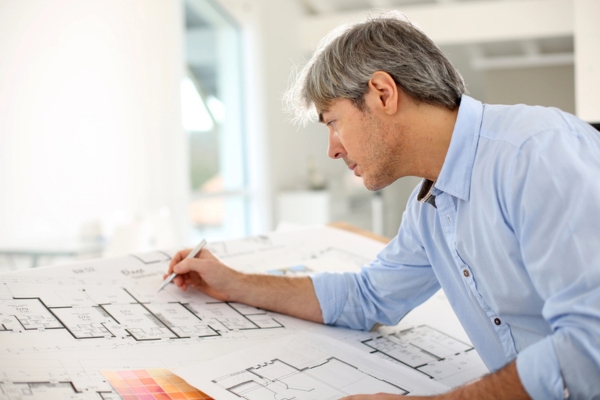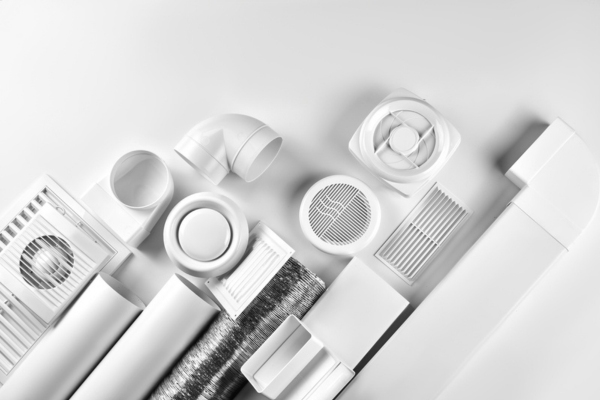Cooling Technology: How Air Conditioning Shapes Modern Architecture

The introduction of air conditioning technology has profoundly reshaped architectural design and construction. Air conditioning allows structures to accommodate a variety of climatic conditions while boosting comfort for those inside. In this article from Lawes Company, we delve into the role that cooling technology has played in influencing buildings’ aesthetics, material selection, and layouts.
Exploring this nexus between advancements in air conditioning and architectural creativity gives us a deeper appreciation of how architects are now designing and building contemporary, sustainable, and comfortable spaces.
How Cooling Technology Impacts Architectural Design
Contents
- 1 How Cooling Technology Impacts Architectural Design
- 1.1 Advancements in Air Conditioning Systems
- 1.2 The Air Conditioner’s Role in Shaping Modern Architecture
- 1.3 Influence of Cooling Systems on Building Materials and Methods
- 1.4 Selection of Building Materials & Design Principles
- 1.5 Seamless Integration of Cooling Systems in Architectural Design
- 1.6 Emphasis on Sustainability and Energy Efficiency
- 2 Future Trends & Innovations in Architecture and Cooling
- 3 Conclusion
- 4 Contact Lawes Company for Comprehensive HVAC Services
The integrated dynamics between advanced cooling systems and architectural design have dramatically transformed our built environments.
Advancements in Air Conditioning Systems

The development of air conditioning, from early cooling techniques to contemporary, sophisticated HVAC systems, represents a significant trajectory of innovation and adaptability. Pioneering developments like mechanical cooling technology catalyzed a transformative era in architecture. They now allow structures to transcend climatic barriers and elevate the comfort levels of occupants.
Significant advances, such as introducing energy-efficient and eco-friendly refrigerants, have steered architectural design towards more sustainable and inventive building practices. These advancements underscore the pivotal role that air conditioning plays in driving architectural innovation. It has also started influencing how we design, construct, and inhabit spaces.
Experience seamless indoor comfort with Lawes Company’s reliable air conditioning services. Contact us for customized solutions today.
The Air Conditioner’s Role in Shaping Modern Architecture
The introduction of air conditioning technology has profoundly affected architectural design and building configuration. It prompts a transition to enclosed, climate-regulated environments emphasizing comfort and functionality. This technological integration has initiated alterations in buildings’ aesthetics, orientation, window styles, and spatial layouts. It also facilitates enhanced design versatility and improved energy efficiency.
Architects now deliberately factor in the orientation of buildings and the placement of windows. This is to maximize natural lighting and reduce heat accumulation. All while integrating the spatial requirements of air conditioning systems. This development highlights the significant influence of cooling technology on creating contemporary, sustainable built environments.
Influence of Cooling Systems on Building Materials and Methods
The advancement of air conditioning technology has revolutionized architectural design and markedly affected the choice of building materials and construction techniques.
The demand for efficient cooling has shifted preferences towards materials that improve insulation and minimize thermal bridging. Advanced insulating materials, including high-performance foam and aerogel insulation, have gained popularity. These materials are crucial for maintaining optimal indoor temperatures while reducing energy use.
Additionally, adopting green building standards and certifications promotes the use of environmentally friendly materials and construction methods. This approach includes using sustainably sourced materials, adopting construction techniques that minimize waste, and integrating renewable energy sources into building designs.
Selection of Building Materials & Design Principles

The careful selection of building materials and adherence to thoughtful design principles are essential for improving building performance and enhancing occupant comfort:
- Thermal Mass Utilization: More buildings are incorporating materials with substantial thermal mass, such as stone and concrete, to control indoor temperatures. These materials capture heat during the day and release it at night, naturally cooling the environment and diminishing reliance on air conditioning systems.
- Insulation: Insulation has become fundamental in the construction of energy-efficient buildings. High-quality insulation minimizes cooling needs and significantly boosts indoor comfort by stabilizing temperature levels and reducing sound transmission.
- Energy-Efficient Architectural Design: Buildings’ design and orientation are now crafted with greater precision to enhance natural ventilation and daylight use, reducing dependence on artificial cooling and lighting. Key strategies include strategic window placement, using reflective materials to lessen heat absorption, and implementing shading devices to manage solar gain.
You can rely on Lawes Company for your cooling needs. Contact us for prompt and professional service.
Seamless Integration of Cooling Systems in Architectural Design
Integrating cooling systems into architectural design is a crucial facet of contemporary building practices. It is essential for maintaining optimal functionality without sacrificing aesthetic quality or spatial utility.
- Design Elements Integration: Components like HVAC ductwork, vents, and grilles are no longer just functional; they are transforming into vital architectural design elements. This requires meticulous planning to ensure these systems enhance the space’s design narrative, merging effortlessly with both the interior and exterior aesthetics.
- Placement of Air Conditioning Systems: The strategic design and location of HVAC systems are essential for adequate air distribution and accurate temperature regulation. This includes evaluating the building’s orientation, the layout of rooms, and how spaces are used to identify the most efficient positions for vents and ductwork. Proper placement optimizes air conditioning efficiency and improves comfort by promoting even temperature distribution and consistent air quality throughout the structure.
This careful integration of cooling systems into architectural design represents a comprehensive approach to building development where functionality, efficiency, and aesthetic appeal are present.
Emphasis on Sustainability and Energy Efficiency
Prioritizing energy efficiency and sustainability in architectural design and cooling technologies signifies a pivotal transition towards greener building practices. Contemporary advancements in air conditioning, including energy-conserving systems and intelligent controls, play a vital role in this shift.
These innovations help increase comfort while decreasing energy consumption and emissions. Incorporating renewable energy sources into cooling systems underscores a deep commitment to reducing environmental impact, marking an essential advance in sustainable development.
Air conditioning is essential in mitigating the urban heat island effect and reducing carbon footprints through sustainable building strategies. Implementing green roofs, enhancing natural ventilation, and upgrading insulation are vital practices that decrease dependence on mechanical cooling, contributing to energy conservation and environmental stewardship.
This trend of integrating sustainability into cooling technology and architectural design elevates energy performance and establishes new benchmarks for crafting environmentally conscious and comfortable homes.
Stay cool and comfortable effortlessly. Contact Lawes Company for prompt and efficient air conditioning repairs and installations.
Future Trends & Innovations in Architecture and Cooling

Emerging trends and innovations in cooling technology, such as passive cooling systems and intelligent HVAC controls, are poised to profoundly influence architectural design and urban planning. Passive cooling leverages natural processes to lower temperatures. This promotes designs in sync with the environment and decreases dependency on energy-intensive systems. Intelligent controls enhance efficiency and comfort by making real-time adjustments based on environmental conditions.
Collaboration between architects, engineers, and HVAC specialists is essential for incorporating these innovative technologies and ensuring that buildings are aesthetically appealing and functionally advanced. Additionally, green building certifications drive the industry towards greater energy efficiency and sustainability. This points to a future where architectural and cooling technologies advance together to reduce environmental impacts and enhance urban spaces for upcoming generations.
Conclusion
Cooling technology has profoundly impacted architectural design and building practices, driving innovations that create more comfortable and sustainable environments. The integral relationship between air conditioning and architectural design underscores the need to incorporate energy-efficient cooling solutions into modern design strategies.
As the industry progresses, Lawes Company delivers expert HVAC solutions designed to meet the complex demands of contemporary architecture. Ensuring that projects attain environmental sustainability and optimal comfort.
Contact Lawes Company for Comprehensive HVAC Services
Lawes Company offers premium heating and cooling solutions throughout the Jersey Shore area. Our team of professionals are highly skilled technicians who are committed to excellence in HVAC maintenance, repair, installation, and replacement. Our experts have the knowledge and experience necessary to service your HVAC system efficiently and effectively.
We are proud to provide the most competitive pricing for HVAC services in the area. Choosing our maintenance services can enhance your comfort. We can also help improve your system’s energy efficiency and significantly reduce your heating and cooling costs. When HVAC repairs or system replacements are necessary, you can trust Lawes Company. We can recommend the best options for your home that fit your budget. We back the quality of our work with a robust satisfaction guarantee. To schedule a service visit, be sure to get in touch with Lawes Company at your convenience. We offer complimentary, no-obligation in-home evaluations.
Contact us now at (732) 741-6300 to find out more! Click the link to view our service area.

Related Articles:
- Why A Portable Air Conditioner Might Not Be The Cool Solution You’re Looking For
- Choosing Wisely: Ductless or Window AC for Your Cooling Needs
- AC Blowing Weak Air: What Should You Do?
- The Right Attic Air Conditioner: What Should You Look For?
- Why Ductless Air Conditioner System Is Key To Cooling Your Basement